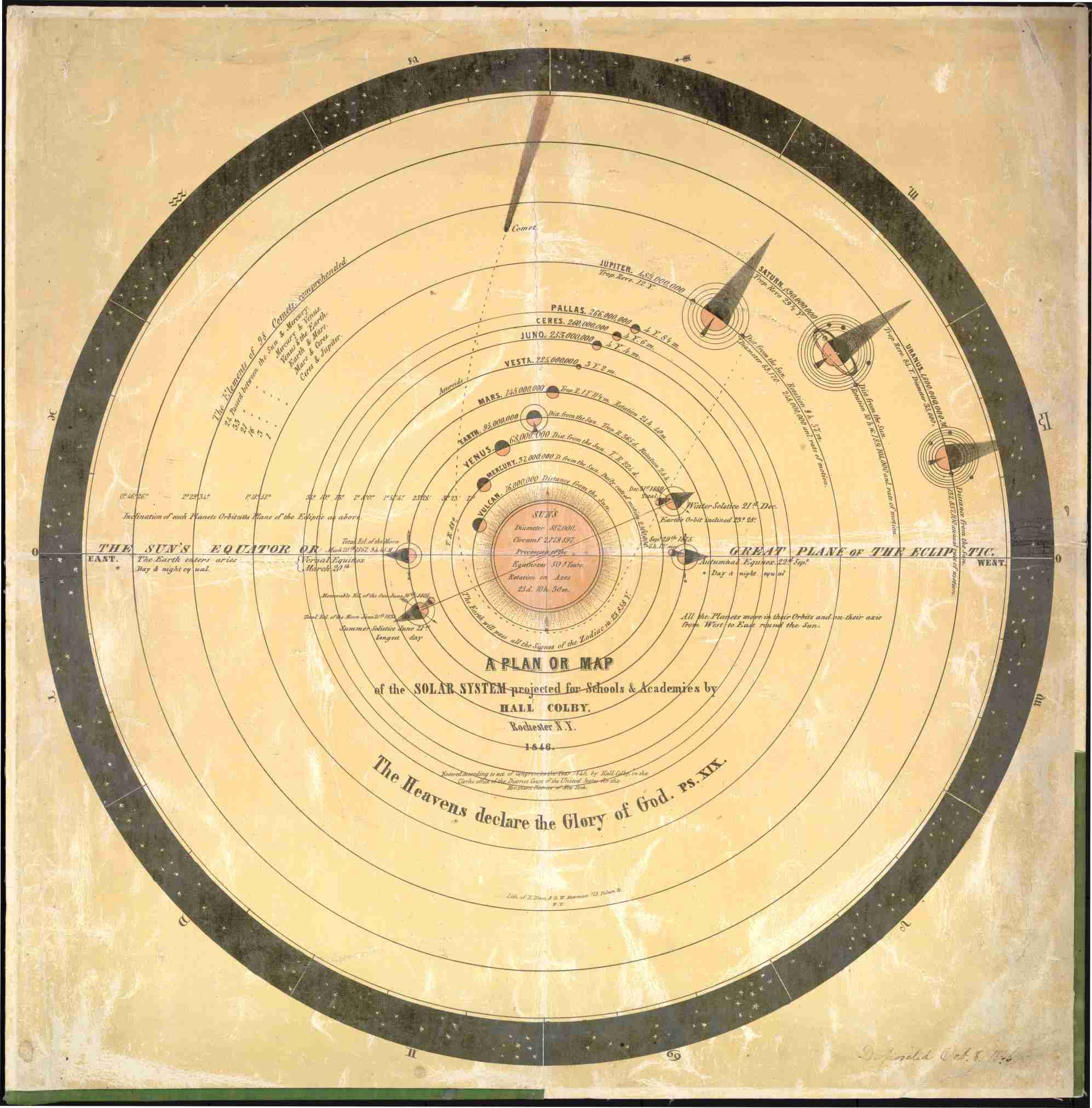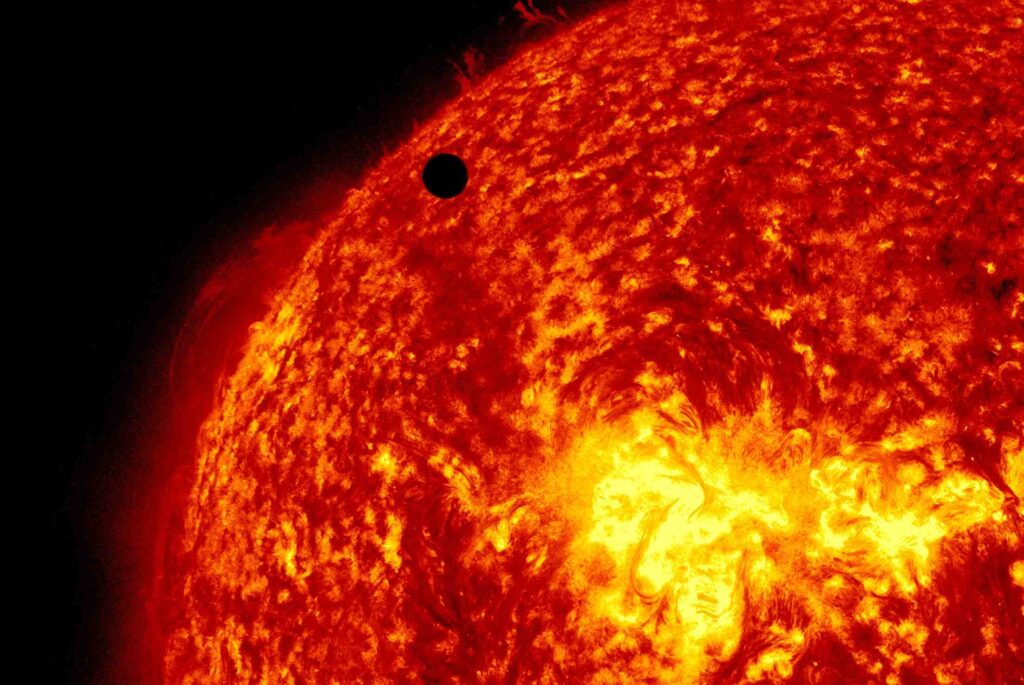Introduction to the timeline
Details on both expeditions and key developments and milestones in the history of solar eclipse science are summarised in the timeline below.
Using the timeline
If the timeline does not load, you most likely need to enable cookies. In order to do this, select “Cookie preferences” at the bottom left of this page and then select “Accept recommended cookies”, or equivalently, enable performance cookies, functionality cookies, and targeting cookies.
Introduction to the historical narrative
We start our historical journey from July 1851, with the first photograph of a solar eclipse, and traverse through the centuries, highlighting eclipse discoveries that made impacts on our scientific knowledge today. But before delving into the details of various expeditions, it is important to understand what astronomers aimed to learn or achieve by studying solar eclipses.
Alongside studying the structure of the Sun, the initial objectives can be summarised into the following two astronomical questions:
Is there a planet between Mercury and the Sun?
Of course, we now know that the answer to this question is no. However, after the discovery of Uranus in 1781, British astronomer John Couch Adams noticed a discrepancy between the predicted and actual orbital period of Uranus. Suggestions were made by Urbain Le Verrier that the perturbations in Uranus’ orbit are due to the presence of an unknown mass nearby. This mass was later confirmed in 1846 to be the planet Neptune. Interestingly, Neptune’s existence is the first discovery that was proven mathematically before being observed.
How does this relate to Mercury?
In 1859, Le Verrier published a paper regarding a similar perturbation in Mercury’s orbit. With the prior discovery of Neptune, it was natural for similar hypotheses to be made about the existence of intra-mercurial planet(s). Astronomers even gave it the name “Vulcan” after the Roman god of fire and volcanoes, due to its proximity to the Sun.
The next logical question to ask is how solar eclipses help to prove or disprove Vulcan’s presence in the Solar System.
The answer lies in the fact that with the Moon blocking most sunlight during a solar eclipse, it becomes easier for astronomers to make observations of Mercury and any possible planets in its proximity.

How big is the solar system?
The first thing to note is that size is relative. With units of measurement such as miles, it is impossible to gain a tangible understanding of the true size and distance of astronomical objects. So, it is essential to use a measurement that is both intuitive and allows easy comparison of astronomical distances. For us, the most logical measurement to use is the average length between the Earth and the Sun, which we now define as one astronomical unit (represented as AU).
This is where we hit another problem – the Earth to Sun distance was unknown. Nonetheless, an opportunity to calculate this presented itself in the form of Venus’ transit.
The Transit of Venus is an incredibly rare event with an overall 243-year cycle. Transits occur twice, with an 8-year interval between the two events. Though the time between the second transit of the previous pair and the first transit of the next pair alternate between approximately 121 and 105 years. Astronomers aimed to calculate the time taken for Venus to travel across the diameter of the Sun’s face and then use parallax to determine the distance between the Earth and the Sun.
Due to the low frequency of the event, it was crucial to ensure there would be minimal room for human error. In comparison, there are between two to five solar eclipses every year. As a result, many astronomers would also use solar eclipse expeditions to simulate the transit of Venus and perfect any techniques and methods that they planned to employ. This is why many eclipse observers also participated in expeditions to observe Venus.

Furthermore, the emergence of technologies such as photography and spectroscopy, with improvements over time, allowed eclipse observers to study the structure and properties of the Sun – providing the foundation of the knowledge we have today.
It is important to note that along with making significant scientific impacts, such as the verification of Einstein’s theory of general relativity, eclipse expeditions influenced national and international politics. There are multiple events included on the timeline showing examples of where expeditions were used to invoke nationalism, boast a country’s scientific prowess, or even as an olive branch extended to other nations.